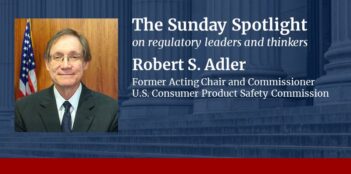
A paperwork budget could gain bipartisan support.
The idea of a regulatory budget has been around for decades. Unfortunately, given the current political environment, the idea of placing a budgetary cap on the overall costs of regulation will likely remain for some time just an idea that regulatory scholars will continue to debate without any practical results. However, a more achievable goal would be to adopt a modified regulatory budget that targets government paperwork requirements. Such a paperwork budget could reduce red tape while leaving current health protections unchanged, thereby generating bipartisan support.
Unlike total regulatory costs and benefits in our economy, we already have a tally of the active collections of information and the total amount of time it takes annually to complete federal paperwork. Although the figure changes daily, the Office of Information and Regulatory Affairs (OIRA) reports approximately 9,100 collections of information (essentially government forms) and more than 10.3 billion hours of paperwork.
If trimming this large burden seems impossible, it isn’t. While the overall trend has been toward more paperwork throughout the years, the accompanying graph does show that there have been deceases at times. (Because Treasury is 75 percent of all paperwork, any single tax collection can drastically affect total numbers; the graph therefore displays collections of information without Treasury, better demonstrating the growth rate of typical regulatory agencies – and the possibility of reductions.)
A paperwork budget could be set up to function much like the United Kingdom’s “one-in, one-out” system for regulation, which recently expanded to “one-in, two-out.” A U.S. version of “one-in, one-out” for paperwork would cap the overall number of Office of Management and Budget (OMB) paperwork approvals and the overall number of hours associated with them.
The budget would operate by agency. For instance, if the Department of Health and Human Services (HHS) wanted to require an additional form, it would have to consolidate or eliminate one of its nearly 1,200 existing forms and ensure the resulting swap would not increase its current 644 million hour paperwork burden.
HHS provides an example of the explosive growth of paperwork—but it also illustrates the feasibility of restraining paperwork. The agency’s total paperwork burdens grew fourfold since 1995. But in 2008 and 2011, the agency did reduce its total burden. In 2012, HHS also finalized a rule to save hospitals $940 million annually by cutting paperwork requirements.
A paperwork budget, of course, would not solve every perceived regulatory problem, but it would reduce the red tape that most citizens and businesses encounter. It would also achieve cost-savings without reducing current health and safety protections. Assuming an hour of regulatory paperwork time is worth $31.23 (the median wage for a regulatory compliance officer), a 100 million hour reduction could save $3.1 billion.
If 100 million hours sounds fanciful, the Department of Transportation (DOT) just proposed to eliminate 46.7 million hours of compliance time, roughly 15 percent of its overall budget. That’s just one rule from one agency. Last year the Consumer Financial Protection Bureau (CFPB) proposed to merge several existing collections to eliminate 8.4 million hours of paperwork, or 21 percent of the Bureau’s total.
The goal of a paperwork budget would be to give teeth to the “Paperwork Reduction Act.” Instead of just tracking paperwork, agencies would be compelled to keep their burdens neutral. The returns could be tremendous. In FY 2011, the government added 355 million hours of paperwork burdens. An effective budget would have prevented this expansion and saved $11.8 billion (again assuming a cost of $31.23 an hour). To put that in perspective, OIRA has reported high-end costs of $12 billion in FY 2010 for all the major rules it reviewed.
Although a comprehensive regulatory budget is likely a non-starter politically, a paperwork budget could garner bipartisan support because it will save time and money while doing nothing to alter fundamental health and safety protections. Of course, if in the end Congress cannot pass such a reform, the President could still issue an executive order implementing a paperwork budget for cabinet-level agencies.




